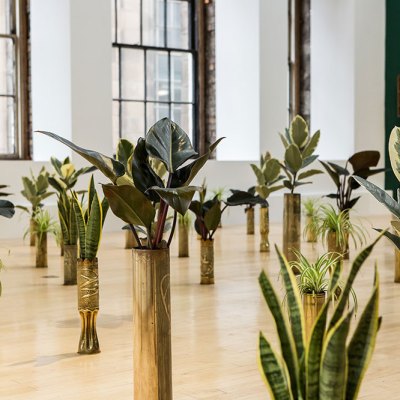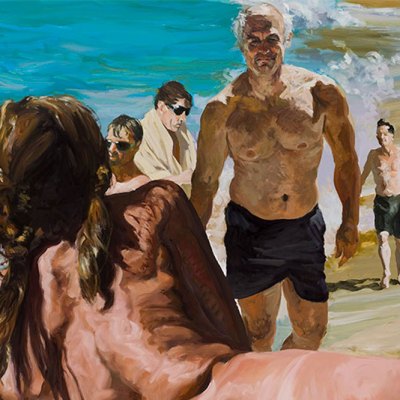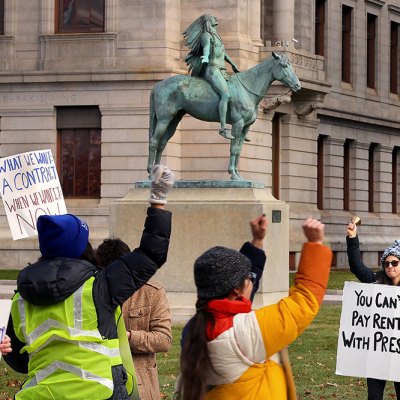The simplicity of the idea behind ‘Day Jobs’, an exhibition that explores how workaday occupations have shaped what artists make, conceals the inventiveness at its core. By examining dozens of artists – including such well-known figures as Lillian Schwartz and Andy Warhol as well as less established ones – through the lens of their non-art work, curator Veronica Roberts flips the script. To borrow a line from her introduction to the exhibition catalogue, she ‘foregrounds the background’ in an attempt to demystify the relationship between making art and making money.
To provide context for the show, which is on display at the Cantor Arts Center in Stanford, California, Roberts cites a 2014 report which found that ‘only 10 per cent of working artists who graduated with a BA or BFA in the arts make a living from their art’. Although nearly all the artists featured in ‘Day Jobs’ eventually quit those jobs to make art full-time, what connects each of the exhibition’s sections – organised by the type of job – is a critique of the assumptions that accompany the term ‘serious artist’.
Money to Loan (Paintings for the San Francisco Bus Shelter Posters) (2000), Margaret Kilgallen. Hammer Museum, Los Angeles. Photo: Tony Prikryl; courtesy the Margaret Kilgallen Estate

British-American artist Lenka Clayton’s ‘Artist-Residency-in-Motherhood’ initiative, works from which are featured in the ‘Caregivers’ section of the show, is a case in point. A self-directed project that took place from 2012–15, the residency explored what would happen if an artist were to reclaim the early years of parenthood as a time and space within which to produce works of art, rather than as a full-time occupation that might hinder this kind of creativity. 63 Objects Taken from My Son’s Mouth (2013), which Clayton completed during the residency, arranges 63 bits and bobs in a grid pattern, including some items you might expect to find their way into an infant’s chops, like pennies and acorns, but also a cigarette butt, a bottle cap and a large teabag. Resembling an entomologist’s pin board, Clayton’s experiment in dissolving the barrier between her personal and her professional life upends any assumption that raising children and ‘being a serious artist’ are incompatible.
It’s one of a very broad range of works Roberts has selected for this exhibition, which first opened last year at the Blanton Museum of Art in Austin, Texas. Each work clearly bears the influence of the artist’s former – and sometimes current – day job. In the ‘Design and Fashion’ section, for example, Barbara Kruger’s stark black-and-white collage Untitled (Your Fact is Stranger than Fiction) (1983) recalls the artist’s background as a graphic designer at Condé Nast. Though Kruger’s collages are widely recognised for their part in laying the groundwork for generations of mixed-media artists, here the piece serves to highlight an important overlap between commercial design and visual art.
Untitled (Your Fact is Stranger than Fiction) (1983), Barbara Kruger. Private collection, New York. Courtesy Sprüth Magers, David Zwirner and the artist
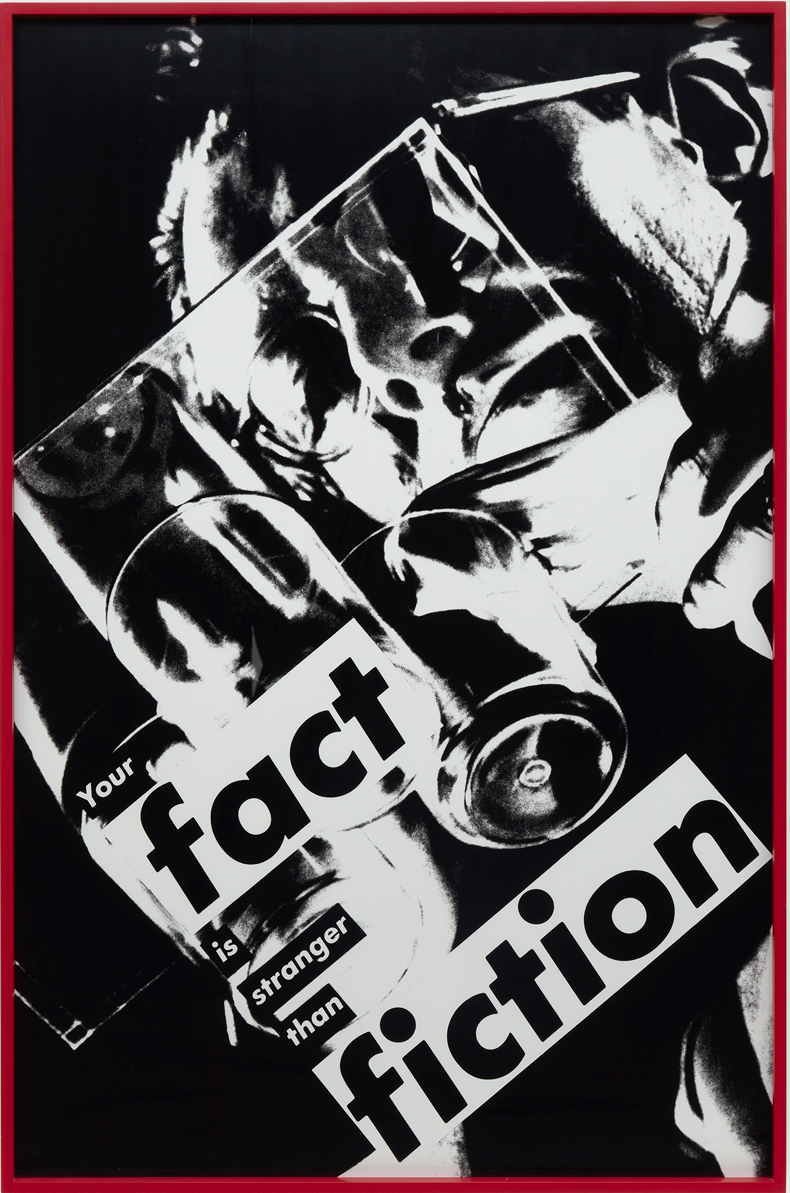
Throughout each section, useful connections are drawn between work and worker. Mark Bradford’s experience in his mother’s salon exposed him to the materials that came to define his early career, including paper rectangles used for permanents, bobby pins and hair dye. Sol LeWitt’s time working as a receptionist at the Museum of Modern Art introduced him to influential figures such as Dan Flavin, Robert Ryman and the art critic Lucy Lippard, and emboldened him to create art of his own. Julia Scher’s job as a janitor at a gym in Minneapolis fuelled her interest in surveillance.
On a very basic level, these connections are humanising. They remind the audience that artists are subject to the same financial imperatives as everyone else. At a deeper level, the exhibition’s central conceit encourages us to take an artist’s biography into account when considering the significance of their work. The kind of information that usually takes the shape of sidenotes is here presented as formative, even determinative. There are potential pitfalls here, to be sure: in her introduction, Roberts acknowledges ‘the historical distrust of biography within art history… given the ways that it has scaffolded myths and flattened complexity around artists’ lives’. The exhibition sidesteps this trap neatly, making the case for the importance of personal context without getting lost in biographical details or positing overly grand claims.
20 minutes from any bus stop (2002), Mark Bradford. Photo: Charles White; courtesy the artist and Hauser & Wirth; © Mark Bradford
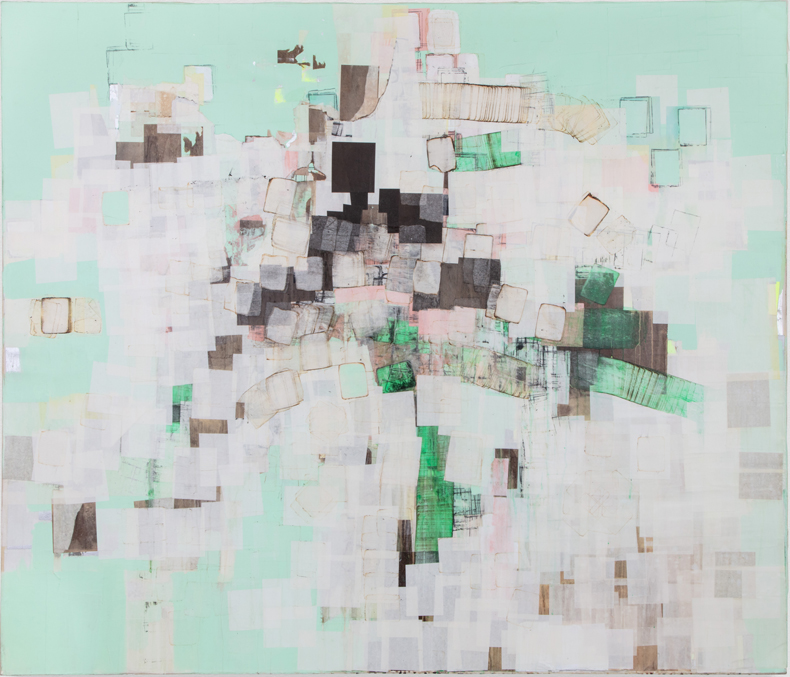
But it’s curious that ‘Day Jobs’ seems to have little time for the countless artists who, by nature of their failure to ‘make it’ in the art world, still have to work a day job. Even though Roberts states that ‘success for an artist is often measured by their ability to quit a day job and focus full-time on creating art’, the show’s overrepresentation of those who are or became full-time artists reinforces the concept of the day-job-to-serious-artist pipeline in the same breath that it critiques it. As far as I could tell, the only artist featured in the exhibition who still works a ‘regular’ job outside of their art is Ragen Moss, who has kept her part-time job as a lawyer in Los Angeles even after finding success in her career as an artist.
Though the show is framed as an attempt to examine how a ‘uniquely American and capitalist reality augments art production’, it is less concerned with investigating the ways in which that reality can also inhibit creativity. For any artists reluctant or unable to remould their practice into commercially appealing shape, the path to financial viability through art alone is unclear. It often seems that finding success as an artist is no less reliant on artistic talent than on networking, self-promotion and courting decision-makers.
That said, ‘Day Jobs’ does start an important conversation, and the questions it asks have been picked up in the mainstream press. There’s no doubt that part- or full-time occupations can be instructive spaces for many aspiring artists – in some cases, the less inherently ‘creative’ the job, the better. But given that the precarity faced by artists trying to turn their passion into a career is still a problem, ‘Day Jobs’ could have pushed some of its questions further.
Legal Tender (2022), Narsiso Martinez. Photo: ofstudio; courtesy Charlie James Gallery
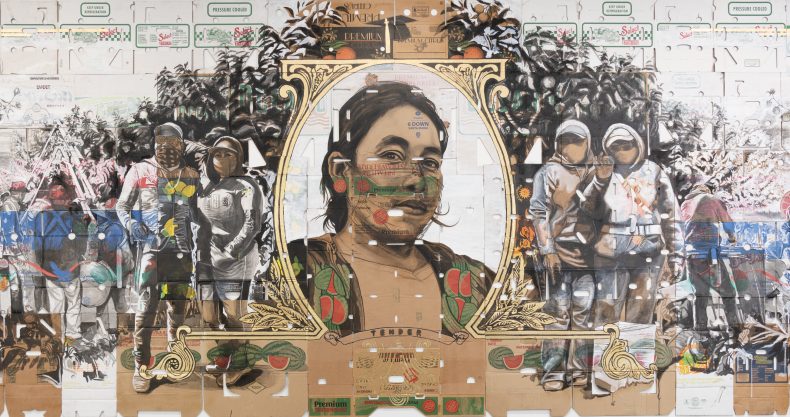
‘Day Jobs’ is at the Cantor Arts Center, Stanford, until 21 July.

